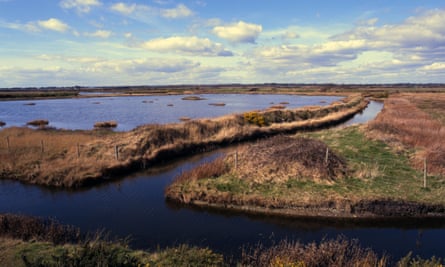From the wilderness of the Finnish boreal forest to the busy Solent estuary, seven landscape restoration projects across Europe have been boosted by more than $26m (£21m) from the Endangered Landscapes Programme (ELP).
The projects cover an area 18 times the size of Greater London and include returning nature to the Iberian Highlands, restoring grassland in the Georgian steppe, and replacing coniferous plantations with natural riverine and deciduous forests in the Rhodope mountains in south-east Bulgaria.
The restoration efforts aim to repair biodiversity hotspots, reintroduce species and work with local communities at a scale large enough to enable ecosystems and natural processes to re-establish themselves. According to the ELP, which is managed by the Cambridge Conservation Initiative and backed by Arcadia, a charitable fund established by billionaire philanthropists Peter Baldwin and Lisbet Rausing, such ambitious landscape restoration will ultimately prove a cost-effective way to address the extinction and climate crises.
In Finland, a $1.5m award will fund attempts to save from extinction a unique, land-locked population of Atlantic salmon by revitalising the fish’s spawning grounds and improving river water quality by restoring 1,000 hectares (2,500 acres) of carbon-sequestering boreal peatlands.
There are just 30 to 50 mother salmon returning to spawn each year in the Koitajoki watershed. Two hydroelectric dams block the migration routes of the landlocked salmon, which are a population that naturally never journey into the sea but migrate to lakes within Finland. The fish survive only because conservationists physically move them over land to assist their migration.
“It’s a knife-edge moment,” said Tero Mustonen of the Koitajoki watershed project. “This $1.5m project will do massively important work to support the last remaining spawning habitat and juvenile fish habitat that exists and also improve water quality. It is addressing, finally, degradation across Koitajoki in scale. I have a vision of uniquely landlocked Atlantic salmon and precious whitefish swimming in restored rivers and streams. Above this, golden eagle and bar-tailed godwits fly as they once did, perhaps smiling to themselves, seeing their homes saved, restored – in short, alive again.”
According to Mustonen, vast funds will be required to create side-streams around the 1960s-era dams for the migratory fish or even dismantle the dams, but he hopes the ELP funds are the “first step” and will open dialogue with the electricity companies that manage the dams about increasing water flows downstream to enable the juvenile fish to flourish.
In Cumbria, 33,000 hectares of land is receiving $5m in funds over five years for an RSPB-led project that seeks to expand nature corridors and wildlife-friendly farming beyond the wildlife hotspots of the Haweswater reserve and the Lowther estate.
Funds will be available for local hill farmers to create new wetlands and hedges, but the project will also support farmers to explore new, nature-friendly business models, helping them access not just the government’s new Environmental Land Management scheme (Elms) funds, but also new private-sector payments for sequestering carbon and boosting biodiversity.
Bill Kenmir, Cumbria ELP project manager, said: “We’re not looking to force farmers into anything, but there is a big change coming and we all need to think about how we will adapt to it. Brexit, leaving the common agricultural policy and all the uncertainty around the government’s new farm funding schemes is making people think about how livestock farming can survive. There’s an understanding that we’re at a point of change and need to be thinking differently, not just farmers, but us conservationists and landowners too.”

While debates over the future of Cumbrian landscapes and communities have been dogged by a perceived clash between rewilders and sheep farmers, Kenmir said there was much more dialogue now and the ELP funds would foster further cooperation between conservationists and farmers in the region. “There’s a real opening-up of conversations, and [the Cumbrian farmer and author] James Rebanks has been at the forefront of bringing regenerative farming forward, opening up collaboration for sectors that historically have worked in isolation.”
The other British project to receive support is the five-year Solent seascape project, which will receive $5m for the restoration of seagrass meadows, oyster reefs, salt marsh and seabird nesting habitat across a complex network of harbours and estuaries under great pressure from industrialisation and urbanisation but which still provide refuge for threatened species including the thresher shark and critically endangered European eel.
In eastern Europe, projects being supported include restoration work on nature-rich habitats within the Rhodope mountains on the border between Bulgaria, Greece and Turkey, a biodiversity hotspot that is home to 81 species on the International Union for Conservation of Nature red list, and a breeding stronghold for the eastern imperial eagle.
There is also a grant award to support work in the Georgian steppe between the Iori and Alazani rivers, which hosts a unique mixture of Palearctic, Indomalayan and Afrotropical fauna, including jackals, wolves and vultures. The project will scale up grassland restoration and continue working with the pastoralist community to recover and to reconnect wildlife corridors from Kakheti to Vashlovani national park.
Dr David Thomas, director of the Endangered Landscapes Programme, said: “We are delighted to announce our new cohort of landscape restoration projects, which will showcase how restoration can improve our environment, creating landscapes where people and nature flourish for generations to come.”




